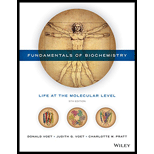
(a)
To calculate: The quantity of
Concept introduction: Half-life period is defined as the time required for a substance to reduce to half of its initial concentration. Half life is independent of the initial concentration of the reaction. Radioactive isotope or radionuclide is the atom of an element that is unstable as it has excess nuclear energy. The excess nuclear energy is emitted as ionizing or non-ionizing radiation.
(b)
To calculate: The quantity of
Concept introduction: Half-life period is defined as the time required for a substance to reduce to half of its initial concentration. Half life is independent of the initial concentration of the reaction. Radioactive isotope or radionuclide is the atom of an element that is unstable as it has excess nuclear energy. The excess nuclear energy is emitted as ionizing or non-ionizing radiation.
(c)
To calculate: The quantity of
Concept introduction: Half-life period is defined as the time required for a substance to reduce to half of its initial concentration. Half life is independent of the initial concentration of the reaction. Radioactive isotope or radionuclide is the atom of an element that is unstable as it has excess nuclear energy. The excess nuclear energy is emitted as ionizing or non-ionizing radiation.
(d)
To calculate: The quantity of
Concept introduction: Half-life period is defined as the time required for a substance to reduce to half of its initial concentration. Half life is independent of the initial concentration of the reaction. Radioactive isotope or radionuclide is the atom of an element that is unstable as it has excess nuclear energy. The excess nuclear energy is emitted as ionizing or non-ionizing radiation.
Want to see the full answer?
Check out a sample textbook solution
Chapter 12 Solutions
Fundamentals of Biochemistry: Life at the Molecular Level
 BiochemistryBiochemistryISBN:9781319114671Author:Lubert Stryer, Jeremy M. Berg, John L. Tymoczko, Gregory J. Gatto Jr.Publisher:W. H. Freeman
BiochemistryBiochemistryISBN:9781319114671Author:Lubert Stryer, Jeremy M. Berg, John L. Tymoczko, Gregory J. Gatto Jr.Publisher:W. H. Freeman Lehninger Principles of BiochemistryBiochemistryISBN:9781464126116Author:David L. Nelson, Michael M. CoxPublisher:W. H. Freeman
Lehninger Principles of BiochemistryBiochemistryISBN:9781464126116Author:David L. Nelson, Michael M. CoxPublisher:W. H. Freeman Fundamentals of Biochemistry: Life at the Molecul...BiochemistryISBN:9781118918401Author:Donald Voet, Judith G. Voet, Charlotte W. PrattPublisher:WILEY
Fundamentals of Biochemistry: Life at the Molecul...BiochemistryISBN:9781118918401Author:Donald Voet, Judith G. Voet, Charlotte W. PrattPublisher:WILEY BiochemistryBiochemistryISBN:9781305961135Author:Mary K. Campbell, Shawn O. Farrell, Owen M. McDougalPublisher:Cengage Learning
BiochemistryBiochemistryISBN:9781305961135Author:Mary K. Campbell, Shawn O. Farrell, Owen M. McDougalPublisher:Cengage Learning BiochemistryBiochemistryISBN:9781305577206Author:Reginald H. Garrett, Charles M. GrishamPublisher:Cengage Learning
BiochemistryBiochemistryISBN:9781305577206Author:Reginald H. Garrett, Charles M. GrishamPublisher:Cengage Learning Fundamentals of General, Organic, and Biological ...BiochemistryISBN:9780134015187Author:John E. McMurry, David S. Ballantine, Carl A. Hoeger, Virginia E. PetersonPublisher:PEARSON
Fundamentals of General, Organic, and Biological ...BiochemistryISBN:9780134015187Author:John E. McMurry, David S. Ballantine, Carl A. Hoeger, Virginia E. PetersonPublisher:PEARSON





